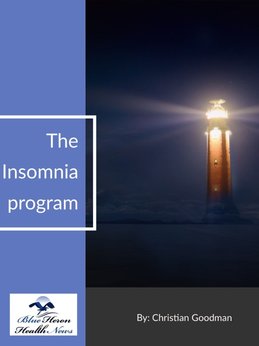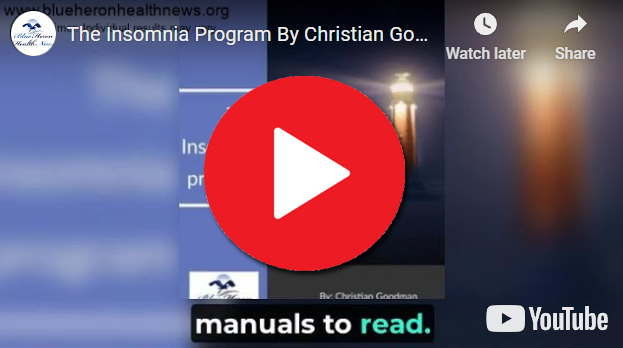
The Insomnia Program™ By Christian Goodman This program has been created by Christian Goodman, a natural health expert and sufferer of insomnia. He has used an audio program to let your fall sleep with the help of a bit of a hypnotic effect on your body.
How does insomnia differ from other sleep disorders?
How Insomnia Differs from Other Sleep Disorders
Insomnia is one of the most common sleep disorders, but it is not the only one. Understanding how insomnia differs from other sleep disorders is crucial for accurate diagnosis and effective treatment. Below, we will explore the key differences between insomnia and several other prevalent sleep disorders, including sleep apnea, restless legs syndrome, narcolepsy, and circadian rhythm sleep disorders.
1. Insomnia
Description:
- Insomnia is characterized by difficulty falling asleep, staying asleep, or achieving restorative sleep, despite having the opportunity to sleep.
- It can be acute (short-term) or chronic (long-term).
Symptoms:
- Difficulty falling asleep at night.
- Frequent awakenings during the night.
- Waking up too early and not being able to go back to sleep.
- Daytime fatigue and sleepiness.
- Mood disturbances, irritability, and cognitive impairment.
Causes:
- Stress, anxiety, depression.
- Poor sleep habits.
- Medical conditions and medications.
- Environmental factors such as noise and light.
Diagnosis and Treatment:
- Diagnosis is based on sleep history and patterns, often using sleep diaries and questionnaires.
- Treatment includes cognitive-behavioral therapy for insomnia (CBT-I), medications, and lifestyle changes.
2. Sleep Apnea
Description:
- Sleep apnea is a disorder characterized by repeated interruptions in breathing during sleep.
- The most common type is obstructive sleep apnea (OSA), where the airway becomes blocked during sleep.
Symptoms:
- Loud snoring.
- Episodes of breathing cessation during sleep.
- Gasping or choking during sleep.
- Excessive daytime sleepiness.
- Morning headaches and dry mouth.
Causes:
- Obesity.
- Enlarged tonsils or adenoids.
- Family history of sleep apnea.
- Smoking and alcohol use.
Diagnosis and Treatment:
- Diagnosis involves a sleep study (polysomnography) to monitor breathing patterns, oxygen levels, and other parameters.
- Treatment includes continuous positive airway pressure (CPAP) therapy, lifestyle changes, oral appliances, and in some cases, surgery.
3. Restless Legs Syndrome (RLS)
Description:
- RLS is a neurological disorder characterized by an uncontrollable urge to move the legs, usually due to uncomfortable sensations.
Symptoms:
- Unpleasant sensations in the legs (tingling, aching, itching).
- An urge to move the legs to relieve these sensations.
- Symptoms that worsen during periods of rest or inactivity.
- Difficulty falling asleep and staying asleep.
Causes:
- Genetic factors.
- Iron deficiency.
- Chronic diseases (kidney failure, diabetes).
- Medications.
Diagnosis and Treatment:
- Diagnosis is based on medical history, symptoms, and a neurological examination.
- Treatment includes iron supplements (if deficient), medications to reduce symptoms, and lifestyle changes.
4. Narcolepsy
Description:
- Narcolepsy is a chronic sleep disorder characterized by excessive daytime sleepiness and sudden, uncontrollable episodes of falling asleep (sleep attacks).
Symptoms:
- Excessive daytime sleepiness.
- Cataplexy (sudden loss of muscle tone triggered by strong emotions).
- Sleep paralysis (temporary inability to move or speak while falling asleep or waking up).
- Hallucinations (vivid, dream-like experiences).
Causes:
- Genetic factors.
- Autoimmune disorders.
- Lack of hypocretin (a brain chemical that regulates wakefulness).
Diagnosis and Treatment:
- Diagnosis involves a sleep study and multiple sleep latency test (MSLT).
- Treatment includes medications to manage symptoms and lifestyle adjustments.
5. Circadian Rhythm Sleep Disorders
Description:
- Circadian rhythm sleep disorders are disruptions in the body’s internal clock, which regulates the sleep-wake cycle.
Types:
- Delayed Sleep-Wake Phase Disorder: Difficulty falling asleep and waking up at desired times.
- Advanced Sleep-Wake Phase Disorder: Falling asleep and waking up much earlier than desired.
- Irregular Sleep-Wake Rhythm: Lack of a clear sleep-wake pattern.
- Non-24-Hour Sleep-Wake Disorder: Sleep pattern that is not synchronized with the 24-hour day.
Symptoms:
- Insomnia or excessive sleepiness.
- Difficulty maintaining a regular sleep schedule.
- Problems with social, occupational, or other areas of functioning due to sleep disruption.
Causes:
- Genetic factors.
- Shift work or irregular work schedules.
- Blindness (in non-24-hour sleep-wake disorder).
Diagnosis and Treatment:
- Diagnosis involves sleep diaries, actigraphy, and clinical evaluation.
- Treatment includes light therapy, melatonin supplements, and lifestyle adjustments to align the sleep-wake cycle.
Key Differences Between Insomnia and Other Sleep Disorders
- Primary Symptoms:
- Insomnia: Difficulty falling asleep, staying asleep, or achieving restorative sleep.
- Sleep Apnea: Interrupted breathing during sleep.
- RLS: Unpleasant leg sensations and an urge to move the legs.
- Narcolepsy: Excessive daytime sleepiness and sudden sleep attacks.
- Circadian Rhythm Disorders: Misalignment of sleep-wake cycle with the environment.
- Underlying Causes:
- Insomnia: Often related to stress, anxiety, poor sleep habits, or medical conditions.
- Sleep Apnea: Physical obstructions or abnormalities in the airway.
- RLS: Neurological factors and possibly iron deficiency.
- Narcolepsy: Genetic factors and lack of hypocretin.
- Circadian Rhythm Disorders: Disruptions in the internal body clock, shift work, or blindness.
- Diagnosis Methods:
- Insomnia: Sleep history, diaries, and questionnaires.
- Sleep Apnea: Polysomnography (sleep study).
- RLS: Clinical evaluation and neurological examination.
- Narcolepsy: Polysomnography and multiple sleep latency test.
- Circadian Rhythm Disorders: Sleep diaries, actigraphy, and clinical evaluation.
- Treatment Approaches:
- Insomnia: CBT-I, medications, and lifestyle changes.
- Sleep Apnea: CPAP therapy, lifestyle changes, and possibly surgery.
- RLS: Medications, iron supplements, and lifestyle changes.
- Narcolepsy: Medications to manage symptoms and lifestyle adjustments.
- Circadian Rhythm Disorders: Light therapy, melatonin, and schedule adjustments.
Conclusion
While insomnia shares some commonalities with other sleep disorders, such as disrupted sleep and daytime impairment, each disorder has unique symptoms, causes, and treatment approaches. Recognizing these differences is essential for effective diagnosis and management, helping individuals achieve better sleep and improved overall health.

The Insomnia Program™ By Christian Goodman This program has been created by Christian Goodman, a natural health expert and sufferer of insomnia. He has used an audio program to let your fall sleep with the help of a bit of a hypnotic effect on your body.